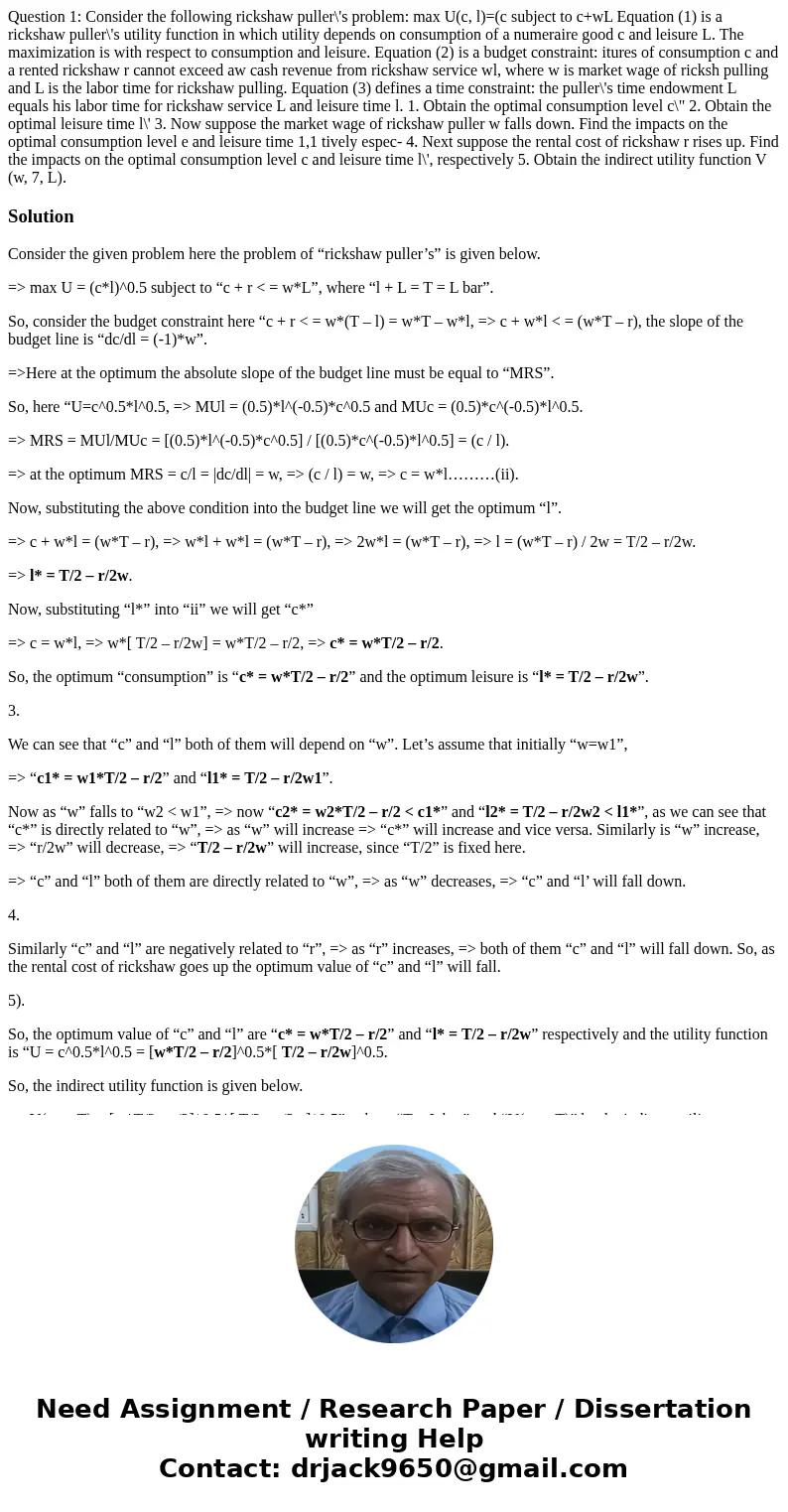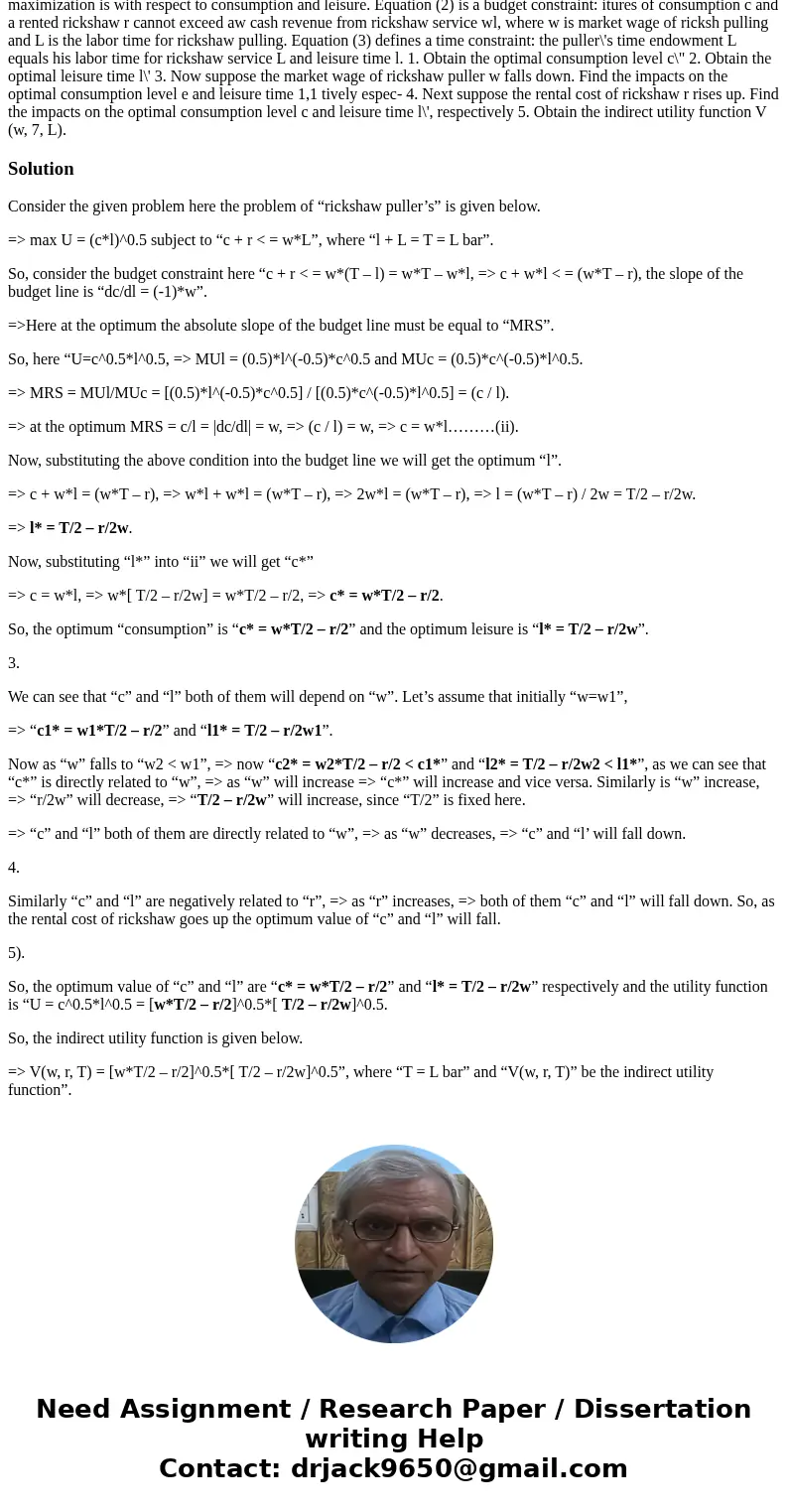Question 1 Consider the following rickshaw pullers problem m
Solution
Consider the given problem here the problem of “rickshaw puller’s” is given below.
=> max U = (c*l)^0.5 subject to “c + r < = w*L”, where “l + L = T = L bar”.
So, consider the budget constraint here “c + r < = w*(T – l) = w*T – w*l, => c + w*l < = (w*T – r), the slope of the budget line is “dc/dl = (-1)*w”.
=>Here at the optimum the absolute slope of the budget line must be equal to “MRS”.
So, here “U=c^0.5*l^0.5, => MUl = (0.5)*l^(-0.5)*c^0.5 and MUc = (0.5)*c^(-0.5)*l^0.5.
=> MRS = MUl/MUc = [(0.5)*l^(-0.5)*c^0.5] / [(0.5)*c^(-0.5)*l^0.5] = (c / l).
=> at the optimum MRS = c/l = |dc/dl| = w, => (c / l) = w, => c = w*l………(ii).
Now, substituting the above condition into the budget line we will get the optimum “l”.
=> c + w*l = (w*T – r), => w*l + w*l = (w*T – r), => 2w*l = (w*T – r), => l = (w*T – r) / 2w = T/2 – r/2w.
=> l* = T/2 – r/2w.
Now, substituting “l*” into “ii” we will get “c*”
=> c = w*l, => w*[ T/2 – r/2w] = w*T/2 – r/2, => c* = w*T/2 – r/2.
So, the optimum “consumption” is “c* = w*T/2 – r/2” and the optimum leisure is “l* = T/2 – r/2w”.
3.
We can see that “c” and “l” both of them will depend on “w”. Let’s assume that initially “w=w1”,
=> “c1* = w1*T/2 – r/2” and “l1* = T/2 – r/2w1”.
Now as “w” falls to “w2 < w1”, => now “c2* = w2*T/2 – r/2 < c1*” and “l2* = T/2 – r/2w2 < l1*”, as we can see that “c*” is directly related to “w”, => as “w” will increase => “c*” will increase and vice versa. Similarly is “w” increase, => “r/2w” will decrease, => “T/2 – r/2w” will increase, since “T/2” is fixed here.
=> “c” and “l” both of them are directly related to “w”, => as “w” decreases, => “c” and “l’ will fall down.
4.
Similarly “c” and “l” are negatively related to “r”, => as “r” increases, => both of them “c” and “l” will fall down. So, as the rental cost of rickshaw goes up the optimum value of “c” and “l” will fall.
5).
So, the optimum value of “c” and “l” are “c* = w*T/2 – r/2” and “l* = T/2 – r/2w” respectively and the utility function is “U = c^0.5*l^0.5 = [w*T/2 – r/2]^0.5*[ T/2 – r/2w]^0.5.
So, the indirect utility function is given below.
=> V(w, r, T) = [w*T/2 – r/2]^0.5*[ T/2 – r/2w]^0.5”, where “T = L bar” and “V(w, r, T)” be the indirect utility function”.


 Homework Sourse
Homework Sourse